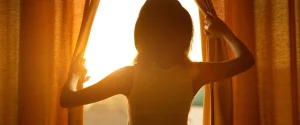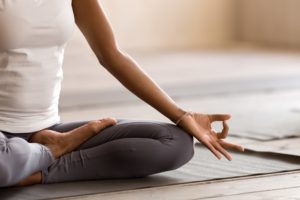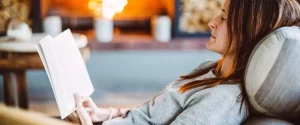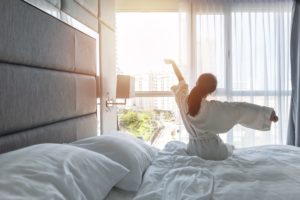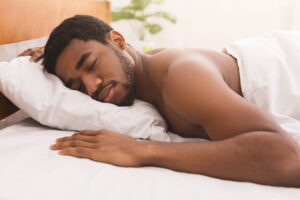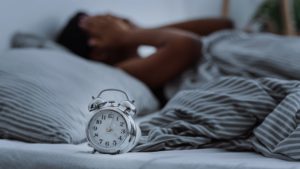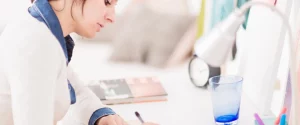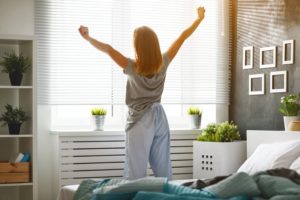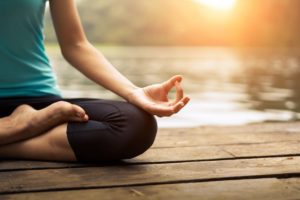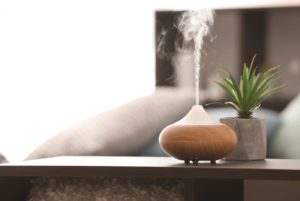Best Breathing Exercises for Sleep
Getting the right amount of quality sleep is crucial for feeling good and staying healthy, yet many people struggle to get the sleep they need. Over one-third of people in the United States report sleeping less than seven hours each night and nearly half report having trouble falling or staying asleep .
Breathing exercises are a simple and easy way to manage stress and wind down before bedtime.Like other healthy sleep habits, learning breathing exercises require both patience and practice. Learn about several breathing exercises that may help to improve your sleep, as well as tips for incorporating breathing exercises into your bedtime routine.
Belly Breathing
Belly breathing, also known as abdominal or diaphragmatic breathing, is an exercise that encourages slower and more relaxed breaths. Most people are accustomed to taking shallow breaths using muscles of the neck and chest , particularly in times of stress. Belly breathing engages the diaphragm, an important breathing muscle located at the bottom of the chest.
Belly breathing can be performed by following a few simple steps :
- Sit or lie down in a comfortable position with one hand on your chest and the other on your belly, slightly above your belly button.
- Take a deep breath through your nose, ensuring that the hand on your chest stays still while the one on your belly rises with your breath.
- As you exhale, allow the hand on your belly to slowly fall.
- Count each breath, feeling your hand rise and fall while breathing with only your diaphragm. After 20 belly breaths, relax and breathe normally.

Bhramari Pranayama Breathing
Bhramari Pranayama is an exercise based on the yoga practice of breath control called pranayama. Bhramari is a type of pranayama in which a person covers their eyes and ears while producing a humming or buzzing sound. This breathing exercise involves several steps :
- Sit in a comfortable position and place your thumbs over your ears to block outside sounds.
- With your thumbs covering your ears, place your index fingers above your eyebrows and use the remaining fingers to hold your eyes closed.
- Take a deep inhale, then exhale slowly through the nose while making a humming or buzzing sound and focusing your attention on the area between your eyebrows.
- Repeat this breathing exercise as needed for relaxation.
4-7-8 Breathing
4-7-8 breathing, also known as relaxing breath, is a deep rhythmic breathing technique based on pranayama practices. This breathing exercise involves a characteristic pattern of inhaling, holding the breath, and exhaling to reduce anxiety and promote relaxed sleep. Try this breathing exercise using five steps:
- Empty your lungs completely by letting your lips part and audibly exhaling through your mouth.
- Keeping your mouth closed, inhale quietly through your nose while counting to 4.
- Hold your breath for a count of 7.
- Exhale slowly through your mouth for a count of 8.
- Repeat this cycle around 6 times before returning to normal breathing.
Box Breathing
Box breathing is a technique that combines breathing exercises with a visualization . As the name suggests, box breathing involves visualizing a box with four sides to remind the person performing the exercise of the pattern and length of each breath. This exercise can be done via several steps:
- Starting after an exhale, inhale slowly through your nose while counting to 4.
- Hold your breath for another count of 4.
- Slowly exhale through your mouth for a count of 4.
- After exhaling, hold your breath for one final count of 4.
- Repeat this breathing pattern as needed.
Alternate Nostril Breathing
Alternate nostril breathing is another variation of pranayama breathing practices. This exercise involves pinching one nostril at a time to help you control the pace and pattern of breathing:
- Blocking your right nostril with your right thumb, slowly breathe in through your left nostril for 6 seconds.
- Block your left nostril with your index finger while holding your breath for 6 seconds.
- Unblock your right nostril and breathe out through your right nostril for 6 seconds.
- Breathe in with your right nostril for 6 seconds.
- Block your right nostril with your thumb and hold your breath for 6 seconds.
- Unblock your left nostril and breathe out through your left nostril for 6 seconds.
- Repeat for several rounds of breathing.
Guided Imagery
Guided imagery combines a breathing exercise with calming visualizations. To practice this exercise, first consider the type of imagery that you may find calming. Some people may enjoy recalling a soothing memory, such as time spent on vacation, while others prefer an imaginary scene like floating in the ocean or on a soft cloud.
Once you have selected an image, practice a breathing exercise such as diaphragmatic breathing while envisioning your chosen scene. If you have trouble coming up with a relaxing image, you may find it helpful to use a video or podcast that offers guided imagery for sleep .
To further deepen your sense of relaxation, continue deep and slow breaths as you focus on each of your five senses, including the sights, sounds, smells, tastes, and feelings that you would encounter within the visualization.
Adding Breathing Exercises to Your Bedtime Routine
Experts suggest that breathing exercises become more effective with practice , so persistence is key when incorporating these exercises into your nightly routine. Additional tips can help you get the most out of your nighttime breath work.
- Prepare for setbacks: It is normal to have setbacks when developing a new habit. Set aside time each night to practice breathing exercises, and recommit to your goals if you find yourself encountering a roadblock.
- Try other healthy sleep tips: Relaxation exercises are just one nighttime tool to help improve your sleep. Consider adding other aspects of healthy sleep hygiene to your nightly routine as well, such as maintaining a consistent bedtime and avoiding coffee and large meals late in the day.
- Talk to your doctor: While breathing exercises may calm your nerves and help you sleep, relaxation is not a substitute for talking to a doctor or sleep specialist. If you are having persistent difficulty falling or staying asleep, it’s important to contact a health care professional for support.

Still have questions? Ask our community!
Join our Sleep Care Community — a trusted hub of sleep health professionals, product specialists, and people just like you. Whether you need expert sleep advice for your insomnia or you’re searching for the perfect mattress, we’ve got you covered. Get personalized guidance from the experts who know sleep best.
References
13 Sources
-
Liu, Y., Wheaton, A. G., Chapman, D. P., Cunningham, T. J., Lu, H., & Croft, J. B. (2016). Prevalence of healthy sleep duration among adults–United States, 2014. MMWR. Morbidity and mortality weekly report, 65(6), 137–141.
https://pubmed.ncbi.nlm.nih.gov/26890214/ -
Schwab, R. J. (2020, June). Merck Manual Consumer Version: Overview of Sleep.
https://www.merckmanuals.com/home/brain,-spinal-cord,-and-nerve-disorders/sleep-disorders/overview-of-sleep -
U.S. Department of Veterans Affairs. (2015, September 2). Relaxation exercise: Deep breathing. Retrieved August 9, 2022, from
https://www.va.gov/vetsinworkplace/docs/em_eap_exercise_breathing.asp -
UpToDate. (n.d.). Breathing with your diaphragm. UpToDate. Retrieved August 9, 2022, from
https://www.uptodate.com/contents/image/print?imageKey=SLEEP%2F126994 -
Vierra, J., Boonla, O., & Prasertsri, P. (2022). Effects of sleep deprivation and 4-7-8 breathing control on heart rate variability, blood pressure, blood glucose, and endothelial function in healthy young adults. Physiological Reports, 10(13), e15389. Retrieved August 2, 2022, from
https://pubmed.ncbi.nlm.nih.gov/35822447/ -
Kuppusamy, M., Kamaldeen, D., Pitani, R., Amaldas, J., & Shanmugam, P. (2018). Effects of Bhramari Pranayama on health – A systematic review. Journal of Traditional and Complementary Medicine, 8(1), 11–16.
https://pubmed.ncbi.nlm.nih.gov/29321984/ -
Abishek, K., Bakshi, S. S., & Bhavanani, A. B. (2019). The Efficacy of yogic breathing exercise Bhramari Pranayama in relieving symptoms of chronic rhinosinusitis. International Journal of Yoga, 12(2), 120–123. Retrieved August 3, 2022, from
https://pubmed.ncbi.nlm.nih.gov/31143019/ -
Norelli, S.K., Long, A., & Krepps, J.M. (2020, September). Relaxation Techniques. StatPearls Publishing.
https://www.ncbi.nlm.nih.gov/books/NBK513238/ -
Naik, G. S., Gaur, G. S., & Pal, G. K. (2018). Effect of modified slow breathing exercise on perceived stress and basal cardiovascular parameters. International journal of yoga, 11(1), 53–58. Retrieved August 3, 2022, from
https://pubmed.ncbi.nlm.nih.gov/29343931/ -
Toussaint, L., Nguyen, Q. A., Roettger, C., Dixon, K., Offenbächer, M., Kohls, N., Hirsch, J., & Sirois, F. (2021). Effectiveness of progressive muscle relaxation, deep breathing, and guided imagery in promoting psychological and physiological states of relaxation. Evidence-based Complementary and Alternative Medicine, 5924040. Retrieved August 3, 2022, from
https://pubmed.ncbi.nlm.nih.gov/34306146/ -
The National Institute for Occupational Safety and Health. (2020, April 1). Relaxation techniques. Centers for Disease Control and Prevention. Retrieved August 9, 2022, from
https://www.cdc.gov/niosh/emres/longhourstraining/relax.html -
National Institute of Diabetes and Digestive and Kidney Diseases. (2020, November). Changing your habits for better health. Retrieved August 9, 2022, from
https://www.niddk.nih.gov/health-information/diet-nutrition/changing-habits-better-health -
A.D.A.M. Medical Encyclopedia [Internet]. Atlanta (GA): A.D.A.M., Inc.; c1997-2019. Changing your sleep habits.
https://medlineplus.gov/ency/patientinstructions/000757.htm







